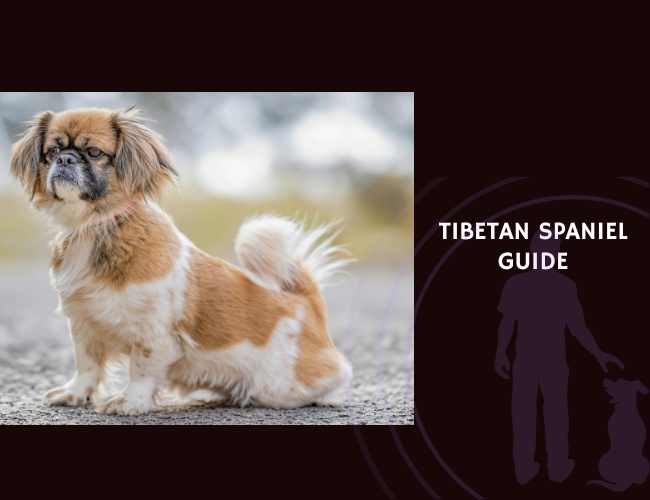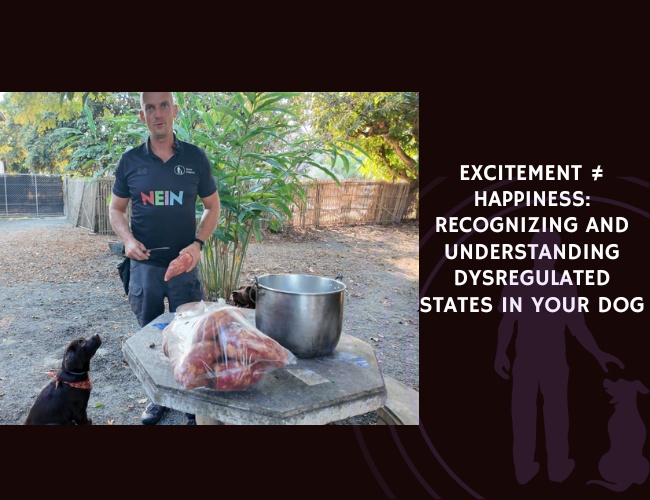Introduction: Meeting Your Monastery Companion
Picture this: high in the Tibetan mountains, a small dog sits atop ancient monastery walls, its keen eyes scanning the horizon while monks go about their daily meditation. This isn’t just any dog—it’s the Tibetan Spaniel, a breed so revered that Buddhist monks believed these little sentinels could house the reincarnated souls of departed lamas. For over 3,000 years, these remarkable companions have been weaving their way through human history, and today, they might just weave their way into your heart.
When you first meet a Tibetan Spaniel, you’ll notice something different about them. Unlike many small breeds that immediately shower strangers with affection, your potential new friend might observe you with an almost cat-like discretion. This isn’t rudeness—it’s the echo of centuries spent as monastery watchdogs, where careful observation meant the difference between safety and danger. Did you know that Tibetan monks called them “Simkyi,” meaning house dog or bedroom dog? These treasured companions didn’t just guard; they accompanied monks on meditative walks and warmed their beds during frigid Himalayan nights.
Today’s Tibetan Spaniel carries this rich heritage in every fiber of their being. They’re neither the yappy lap dog some might expect from their size, nor are they the aloof, untrainable companion their independence might suggest. Instead, you’ll discover a dog that perfectly balances devotion with autonomy, alertness with calm, and ancient wisdom with modern adaptability. Let us guide you through understanding this extraordinary breed that brings monastery wisdom to modern homes. 🐾
Character & Behavior: Understanding Your Tibbie’s Ancient Soul
The Monastery Heritage That Shapes Modern Behavior
Your Tibetan Spaniel’s behavior today directly reflects thousands of years of specialized breeding in Tibetan monasteries. When you notice your furry friend perching on the back of your sofa or seeking the highest point in your home, you’re witnessing an ancient instinct. These dogs served as living alarm systems, using their exceptional distance vision to spot approaching visitors long before they reached monastery gates. This heritage means your modern Tibbie will likely claim your windowsill as their personal watchtower, alerting you to everything from delivery trucks to falling leaves.
The spiritual significance of these dogs in Tibetan Buddhist culture has profoundly influenced their temperament. Monks believed that any human or Buddha could be reincarnated as a dog, treating Tibbies with a reverence that shaped their confident, almost regal bearing. You might notice your Tibetan Spaniel carries themselves with a dignity that seems disproportionate to their 9-15 pound frame. This isn’t arrogance—it’s the genetic memory of being treasured temple companions who expected, and received, respect.
What makes this heritage particularly fascinating is how it manifests in your daily interactions. Your Tibbie won’t grovel for attention like some breeds might. Instead, they’ll approach relationships on their terms, offering deep loyalty once trust is established. This selective affection isn’t a flaw; it’s a feature that made them invaluable to monks who needed dogs capable of distinguishing between welcomed temple visitors and potential threats.
Emotional Intelligence and Sensitivity
Living with a Tibetan Spaniel means sharing your home with an emotional barometer. These dogs possess an almost uncanny ability to read human emotions, a trait developed through centuries of close monastic companionship. You’ll find your Tibbie adjusting their behavior based on your mood—offering quiet companionship during stressful times or playful distraction when you need cheering up.
This emotional sensitivity extends to the entire household dynamic. In families experiencing tension, Tibetan Spaniels often become withdrawn or anxious, their behavior reflecting the emotional climate around them. Conversely, in harmonious households, they flourish, becoming confident and affectionate companions. This sensitivity means they thrive best in stable, peaceful environments where their emotional intelligence can be a gift rather than a burden.
Understanding this trait helps explain why harsh training methods fail spectacularly with this breed. Your Tibbie’s sensitive nature responds to emotional nuance—a disappointed sigh might affect them more than shouting ever could. They’re processing not just your words but your tone, body language, and emotional state, making them remarkably intuitive companions for emotionally aware owners.
The Independent Thinker in a Small Package
Perhaps no trait defines the Tibetan Spaniel more than their fierce independence. This isn’t the stubborn defiance you might find in some breeds, but rather a thoughtful autonomy that evaluates situations before responding. When you call your Tibbie and they pause, looking at you with those expressive eyes before deciding whether to come, they’re not being disobedient—they’re being discerning.
This independence manifests in fascinating ways throughout daily life. Your Tibetan Spaniel might develop their own routines, choosing specific times for play, rest, and observation. They’ll often solve problems independently, finding creative ways to reach favorite perches or access interesting areas. This self-directed thinking made them valuable in monasteries where they needed to make autonomous decisions about potential threats.
The cat-like qualities often mentioned by Tibbie owners stem from this independent streak. You’ll notice your dog grooming themselves meticulously, choosing sunny spots for afternoon naps, and approaching affection on their own terms. Unlike breeds that constantly seek validation, Tibetan Spaniels are comfortable in their own company, though they prefer having their humans nearby. This balance makes them ideal for owners who appreciate a dog with their own personality rather than a constantly needy companion.
Training & Education: Nurturing Your Tibbie’s Potential
Early Socialization: Building Confidence While Respecting Nature
Starting socialization from the moment your Tibetan Spaniel puppy arrives home isn’t just recommended—it’s essential for developing a well-adjusted adult dog. Between 8 and 16 weeks, your puppy’s brain is particularly receptive to new experiences, making this the golden window for exposure to various people, animals, sounds, and environments. You might notice that even with extensive socialization, your Tibbie maintains some reserve with strangers. This isn’t a failure of your training; it’s their genetic heritage expressing itself.
The key to successful Tibetan Spaniel socialization lies in respecting their natural wariness while building confidence. Rather than forcing interactions, create positive associations with new experiences. Let your puppy observe from a comfortable distance before encouraging closer investigation. Use high-value treats to reward calm behavior around strangers, but don’t expect or demand immediate friendliness. Your goal isn’t to create a social butterfly but rather a confident dog who can handle various situations without excessive fear or reactivity.
Puppy classes offer invaluable socialization opportunities, but choose carefully. Look for trainers who understand and respect breed-specific temperaments rather than those pushing for uniform behavior across all breeds. Your Tibetan Spaniel will benefit more from controlled, positive exposures than from overwhelming group activities. Remember, building confidence in a naturally reserved breed requires patience and understanding, not pressure.
Positive Reinforcement: Speaking Your Tibbie’s Language
Training a Tibetan Spaniel requires abandoning any notions of dominance-based methods. These intelligent, sensitive dogs respond to positive reinforcement with enthusiasm but will shut down completely when faced with harsh corrections. Your Tibbie’s brain processes training as a collaborative activity rather than a hierarchical command structure, making your approach crucial to success.
Food motivation runs strong in this breed, making treats powerful training tools. However, vary your rewards to maintain interest—mix high-value treats with praise, play, and privileges like access to favorite perches. Keep training sessions short, typically 5-10 minutes, to work within their attention span. You’ll find your Tibetan Spaniel learns quickly but may choose to “forget” commands that don’t align with their current interests. This selective compliance isn’t stupidity; it’s their independent intelligence evaluating whether compliance serves their purposes.
The secret to training success lies in making obedience rewarding enough to overcome their natural independence. Instead of repetitive drills, incorporate training into daily life. Ask for a sit before meals, a down before opening doors, or a stay before throwing their favorite toy. This contextual learning appeals to their practical intelligence while avoiding the tedium that makes them tune out traditional training methods.
Managing the Watchdog Within
Your Tibetan Spaniel’s alerting behavior stems from centuries of monastery watchdog duties, making complete elimination both impossible and undesirable. Instead, focus on managing and channeling this instinct constructively. The goal is teaching your Tibbie when alerting is appropriate and when to stand down after sounding the alarm.
Start by acknowledging their alerts. When your dog barks at a visitor, calmly say “thank you” or “good watch,” then redirect their attention. This validation prevents frustration while teaching that you’ve received their message. Introduce a “quiet” command using positive reinforcement—reward moments of silence after alerting rather than trying to suppress initial warning barks. Your Tibbie needs to know their watchdog efforts are appreciated but that you ultimately decide how to respond to potential “threats.”
Creating structured alert protocols helps manage excessive barking. Teach your Tibetan Spaniel to alert, then come to you for a reward, breaking the cycle of continued barking at windows or doors. Use management strategies like limiting access to high-traffic windows during training phases, gradually increasing exposure as your dog learns appropriate responses. Remember, your goal is a dog who alerts you to genuine concerns without becoming the neighborhood noise complaint.
Mental Stimulation: Engaging the Monastery Mind
The same intelligence that makes Tibetan Spaniels selective about obedience makes them excellent candidates for mental enrichment activities. Puzzle toys aren’t just entertainment; they’re essential for preventing boredom-related behaviors in this thinking breed. Start with simple treat-dispensing toys and gradually increase complexity as your dog masters each level.
Scent work particularly appeals to Tibetan Spaniels, combining their natural alertness with problem-solving challenges. Hide treats or favorite toys around your home, encouraging your dog to use their nose to locate rewards. This activity channels their watchdog instincts into a constructive game while providing mental exhaustion that physical exercise alone can’t achieve. You can formalize this into nose work classes, where many Tibbies excel despite their independent streak.
Training tricks offers another avenue for mental engagement. Unlike basic obedience, tricks feel more like games to your Tibetan Spaniel, reducing resistance to learning. Focus on tricks that utilize their natural behaviors—spinning, backing up, or “praying” with paws on a surface. These activities strengthen your bond while respecting their need for engaging, varied mental challenges rather than repetitive drilling.

Nutritional Recommendations: Fueling Your Small but Mighty Companion
Understanding Small-Breed Metabolism
Your Tibetan Spaniel’s nutritional needs differ significantly from larger breeds, with a faster metabolism requiring more calories per pound of body weight. This metabolic reality means that despite their small size—typically 9-15 pounds—they need nutrient-dense food to maintain energy levels throughout the day. Adult Tibbies generally thrive on ¾ to 1 cup of high-quality dry food daily, divided into two meals, though individual needs vary based on age, activity level, and metabolism.
The twice-daily feeding schedule serves multiple purposes beyond simple nutrition. It helps prevent hypoglycemia, a concern in small breeds, while also providing structure to your dog’s day. You might notice your Tibetan Spaniel becomes particularly alert around meal times, a behavior that can be used to reinforce training and bonding. Some Tibbies are naturally light eaters with seemingly small appetites, which is normal for the breed as long as weight and energy remain stable.
Quality matters more than quantity when feeding your Tibetan Spaniel. Look for foods with named meat proteins as the first ingredient, avoiding fillers like corn, soy, or wheat when possible. The breed’s Tibetan heritage, where dogs consumed tsampa (ground barley), yak meat, and yogurt, suggests they do well on diets with 23-25% protein content. This moderate protein level supports their energy needs without overwhelming their small digestive systems.
Supporting Coat Health Through Nutrition
That beautiful double coat your Tibetan Spaniel sports requires nutritional support from the inside out. Omega-3 and omega-6 fatty acids play crucial roles in maintaining coat luster and skin health, reducing shedding, and minimizing skin irritations. High-quality dog foods formulated for small breeds typically include these essential fatty acids, but you can supplement with fish oil if your veterinarian recommends it.
Protein quality directly impacts coat condition, as hair is primarily composed of protein. Foods featuring whole meat sources provide the amino acids necessary for healthy hair growth and maintenance. You’ll notice the difference in your Tibbie’s coat texture and shine when they’re receiving optimal nutrition—the coat becomes silkier, less prone to matting, and maintains its weather-resistant properties.
Consider treats as part of your overall nutritional strategy. Traditional Tibetan treats made from yak and cow milk provide high protein content that supports coat health while honoring the breed’s heritage. However, treats should comprise no more than 10% of daily caloric intake to prevent weight gain. Your Tibetan Spaniel’s relatively low activity level means excess calories quickly lead to obesity, which particularly stresses their vulnerable knees.
Dental Health and Food Texture
Small breeds like Tibetan Spaniels face increased risk of dental disease, making food texture an important consideration. While wet food might seem easier for small mouths, dry kibble provides mechanical cleaning action that helps reduce plaque buildup. Choose kibble sized appropriately for your Tibbie’s small mouth—oversized pieces can be difficult to chew and may discourage proper eating habits.
Regular dental care should complement nutritional choices. Even with optimal food choices, your Tibetan Spaniel will benefit from regular teeth brushing and professional cleanings. Some Tibbies accept dental care readily, while others require patient conditioning. Starting dental care routines early, when your dog is still a puppy, increases acceptance and establishes lifelong healthy habits.
Dental chews and treats can supplement your dental care routine, but choose carefully. Products should be appropriately sized and digestible, avoiding anything hard enough to crack teeth. Raw bones, while controversial, were part of the breed’s historical diet in Tibet. If you choose to offer them, supervise carefully and select appropriate sizes that can’t be swallowed whole but aren’t so large they frustrate your small dog.
Life Stage Nutritional Adjustments
Puppy Tibbies require specialized nutrition supporting their rapid early growth. Feed puppy-formulated food three to four times daily until six months, then transition to twice-daily feeding. The frequent meals prevent hypoglycemia while supporting steady growth. Around 10-12 months, gradually transition to adult food over 7-10 days to avoid digestive upset. You’ll know your puppy is ready for adult food when their growth rate slows and they begin leaving food in their bowl.
Adult Tibetan Spaniels maintain relatively stable nutritional needs from about one year to seven or eight years old. During this life stage, focus on maintaining ideal body weight—you should feel but not see ribs, with a visible waist when viewed from above. Monitor treat intake carefully, as many Tibbies become skilled at soliciting extra snacks from family members. Their expressive eyes and charming personalities make them accomplished beggars, but resist overfeeding to prevent obesity-related health issues.
Senior Tibetan Spaniels, typically over eight years old, may require adjusted nutrition supporting aging joints and potentially slower metabolism. Senior formulas often include glucosamine and chondroitin for joint support, particularly important given the breed’s susceptibility to patellar luxation. Reduced calorie density helps prevent weight gain as activity levels decrease, while increased fiber supports digestive health. Some senior Tibbies develop pickier appetites, requiring creative approaches to maintain interest in meals.
Health Concerns & Susceptibilities: Protecting Your Precious Companion
Understanding Progressive Retinal Atrophy (PRA)
Perhaps no health concern weighs more heavily on Tibetan Spaniel owners’ minds than Progressive Retinal Atrophy, particularly the PRA3 variant specific to this breed. This genetic condition, caused by a mutation in the FAM161A gene, typically manifests around five years of age, though onset can vary. Understanding PRA helps you prepare for potential challenges while appreciating that affected dogs can still lead fulfilling lives.
The progression of PRA follows a predictable pattern, beginning with night blindness as rod cells deteriorate first. You might notice your Tibbie becoming hesitant in dim lighting, bumping into furniture after dark, or reluctant to navigate stairs in low light. As the condition progresses, daytime vision deteriorates as cone cells fail, eventually leading to complete blindness. While this sounds devastating, dogs adapt remarkably well to vision loss, especially in familiar environments.
Genetic testing can identify carriers and affected dogs before symptoms appear. Approximately 15% of tested Tibetan Spaniels carry the PRA3 mutation, making screening essential for breeding programs. If your Tibbie is diagnosed with PRA, focus on maintaining consistent home layouts, using verbal cues more extensively, and protecting them from hazards. Many blind Tibetan Spaniels navigate their homes confidently, relying on scent, hearing, and memory. The condition isn’t painful, and with appropriate support, affected dogs maintain excellent quality of life.
Managing Luxating Patella
Patellar luxation, where the kneecap dislocates from its normal position, affects many small breeds including Tibetan Spaniels. You might notice your dog suddenly lifting a back leg while walking, appearing to skip or hop for a few steps before returning to normal gait. This intermittent lameness occurs when the patella pops out of position, then spontaneously returns to its groove.
The condition varies in severity across four grades, with many Tibetan Spaniels managing well with conservative treatment for grades 1-2. Anti-inflammatory medications and joint supplements often provide sufficient comfort for mild cases. Maintaining ideal body weight becomes crucial, as excess pounds increase stress on already vulnerable knees. Low-impact exercise like swimming can help maintain muscle mass supporting the knee joint without excessive stress.
Severe cases (grades 3-4) may require surgical correction to prevent chronic pain and arthritis development. The surgery involves deepening the groove where the patella sits and potentially realigning the attachment of the patellar ligament. Post-surgical recovery requires strict rest and gradual rehabilitation, but most dogs return to normal activity levels. Early intervention typically yields better outcomes, so don’t dismiss intermittent limping as “no big deal.”
Respiratory Considerations for a Brachycephalic Breed
While Tibetan Spaniels aren’t as extremely brachycephalic as Pugs or French Bulldogs, their shortened muzzles do create some respiratory considerations. Your Tibbie’s flattened face means their air passages are compressed into a smaller space, potentially causing breathing difficulties in certain situations. Understanding these limitations helps you protect your dog from respiratory distress.
Heat and humidity pose particular challenges for brachycephalic breeds. Your Tibetan Spaniel’s shortened airways make panting—their primary cooling mechanism—less efficient than in longer-muzzled breeds. During summer months, exercise during cooler morning or evening hours, always provide access to fresh water, and never leave your Tibbie in a car, even briefly. Watch for signs of heat stress: excessive panting, drooling, weakness, or bluish gums require immediate cooling and veterinary attention.
Some Tibetan Spaniels develop brachycephalic obstructive airway syndrome (BOAS), characterized by stenotic nares (narrowed nostrils), elongated soft palate, or other anatomical abnormalities restricting airflow. Symptoms include noisy breathing, snoring, exercise intolerance, and gagging. While mild cases manage with lifestyle modifications—maintaining healthy weight, avoiding stress, using harnesses instead of collars—severe cases may require surgical correction to improve breathing.
Liver Shunt: A Rare but Serious Concern
Portosystemic shunt, though uncommon in Tibetan Spaniels, deserves awareness due to its serious nature. This condition involves abnormal blood vessels allowing blood to bypass the liver, preventing proper toxin filtration. Affected puppies often show poor growth, appearing smaller than littermates despite adequate nutrition. You might notice increased thirst and urination, sensitivity to sedatives, or neurological signs like circling or seizures, particularly after meals.
Diagnosis typically involves blood work showing elevated bile acids, followed by advanced imaging to visualize the abnormal vessels. Treatment depends on shunt location and severity. Medical management includes special low-protein diets reducing ammonia production, lactulose to trap ammonia in the intestines, and antibiotics minimizing ammonia-producing bacteria. This approach can provide good quality of life for dogs with mild shunts or those not surgical candidates.
Surgical correction offers the best long-term prognosis for appropriate candidates. The procedure involves gradually closing the abnormal vessel, allowing normal liver circulation to develop. Success rates vary based on shunt type and location, with extrahepatic (outside the liver) shunts generally having better outcomes than intrahepatic (within the liver) ones. Post-surgical monitoring is crucial, as rapid shunt closure can cause fatal portal hypertension. With successful treatment, affected dogs can live normal lifespans.
Maximizing Longevity and Healthspan
Tibetan Spaniels enjoy impressive longevity, with recent studies showing an average lifespan of 15.2 years—significantly exceeding the 12.7-year average for purebred dogs. This longevity reflects the breed’s generally robust constitution, but maximizing your individual dog’s healthspan requires proactive care throughout their life stages.
Preventive care forms the foundation of longevity. Regular veterinary checkups allow early detection and intervention for developing issues. Annual blood work establishes baseline values, making abnormalities easier to identify. Dental care prevents bacteria from oral disease entering the bloodstream and affecting major organs. Maintaining ideal body weight reduces stress on joints and organs, potentially adding years to your Tibbie’s life.
Mental and emotional health significantly impact physical wellbeing in this sensitive breed. Tibetan Spaniels experiencing chronic stress or anxiety may develop physical symptoms including digestive issues, skin problems, or decreased immune function. Providing stable routines, appropriate mental stimulation, and responding to their emotional needs supports both psychological and physical health. The breed’s remarkable longevity potential makes investing in comprehensive wellness care particularly rewarding. 🧡
Watchful. Sensitive. Independent.
Ancient instincts remain. Your Tibetan Spaniel’s heritage as a monastery sentinel lives on in their behavior today. From perching on high vantage points to calmly assessing strangers, these instincts reflect centuries of guarding sacred spaces with quiet dignity and alert devotion.
Emotions guide connection. Tibbies mirror the emotional climate of their households with remarkable sensitivity. They thrive in harmony, withdraw in tension, and respond best to gentle guidance, proving that empathy and trust are far more effective than force in shaping their behavior.



Autonomy defines character. Independence is at the core of the Tibetan Spaniel’s identity. They think for themselves, create routines, and approach affection on their own terms, offering companionship that is equal parts discerning, loyal, and deeply personal.
Performance & Activities: Channeling Your Tibbie’s Talents
Agility: Size Doesn’t Limit Ability
Your Tibetan Spaniel might surprise you with their agility potential. Despite their small stature and somewhat independent nature, many Tibbies excel at agility once they understand it’s a game rather than obedience drilling. The key lies in presenting agility as collaborative fun rather than commanded performance. Start with low jumps and simple obstacles, building confidence before introducing more challenging elements.
The breed’s natural climbing ability, inherited from navigating monastery walls and mountain terrain, translates well to agility equipment. You’ll find your Tibbie confidently scaling A-frames and navigating dog walks that intimidate larger breeds. Their small size allows tight turns and quick direction changes, advantages in courses designed for multiple dog sizes. However, respect their brachycephalic limitations—shorter sessions with adequate rest prevent respiratory distress.
Competition might challenge your Tibetan Spaniel’s independent streak, as the excitement and pressure of trials can trigger their selective hearing. Many handlers find success in “fun matches” or non-competitive agility classes where the atmosphere remains relaxed. Focus on the bonding and exercise benefits rather than ribbons, and you’ll both enjoy the experience more. Some Tibbies surprise their owners by rising to competition occasions, particularly when they view it as showing off rather than obeying.
Scent Work: Engaging Ancient Instincts
Nose work activities brilliantly combine your Tibetan Spaniel’s alertness with their problem-solving intelligence. This sport requires dogs to locate specific scents hidden in various environments, mimicking detection dog work in a fun, accessible format. Your Tibbie’s watchdog heritage makes them naturally observant of environmental changes, a skill that translates beautifully to scent detection.
Beginning scent work is remarkably simple—start by hiding treats in cardboard boxes, encouraging your dog to use their nose to locate rewards. As skills develop, introduce specific target odors like birch, anise, or clove. The beauty of scent work lies in its accessibility; you can practice anywhere, making it perfect for apartment dwellers or those with limited mobility. Your Tibetan Spaniel works at their own pace, reducing the performance pressure that might trigger their independent streak.
Advanced scent work involves searching vehicles, exteriors, and complex interior spaces. Tibetan Spaniels often excel at detailed searching, methodically checking areas rather than frantically racing around. Their lower height provides advantages in searching under furniture or in tight spaces. The mental exhaustion from scent work often exceeds physical exercise, making it invaluable for meeting your Tibbie’s stimulation needs regardless of weather or physical limitations.
Therapy Dog Work: Sharing Monastic Calm
The same temperament that made Tibetan Spaniels valued monastery companions can make them excellent therapy dogs for the right handlers. Their size allows them to sit comfortably on laps or hospital beds, while their calm demeanor provides soothing presence. However, their natural reserve with strangers requires careful selection—not every Tibbie suits therapy work.
Successful therapy dog Tibetan Spaniels typically show more outgoing personalities than breed standard, actively enjoying meeting new people rather than merely tolerating interactions. If your dog shows genuine pleasure in gentle stranger interactions, consider therapy dog evaluation. The training focuses on reliable basic obedience, accepting handling from strangers, and remaining calm in unusual environments—skills that respect their intelligent nature while channeling their sensitivity positively.
Therapy work particularly suits senior Tibetan Spaniels who’ve mellowed with age. Their lower energy levels match the quiet environments of nursing homes or libraries, while their life experience helps them remain unflappable during unexpected situations. Many facilities specifically request small therapy dogs for residents fearful of larger breeds, making well-suited Tibbies valuable volunteers. The work provides mental stimulation and social interaction that keeps senior dogs engaged and happy.
Lifestyle & Environment: Creating Your Tibbie’s Perfect World
Apartment Living: Small Space, Big Personality
Tibetan Spaniels adapt remarkably well to apartment living, making them ideal urban companions for the right owners. Their moderate exercise needs and relatively quiet nature (when properly trained) suit close-quarter living. Unlike high-energy breeds that struggle without yards, your Tibbie will contentedly observe the world from a sunny windowsill between walks. Their size means they can get adequate exercise even in studio apartments, using hallways for fetch or hide-and-seek games during inclement weather.
The main apartment living challenge involves managing their watchdog instincts in environments with frequent foot traffic. Your Tibetan Spaniel will alert to hallway noises, neighboring doors opening, and sounds from adjacent units. Early training establishing appropriate alert protocols becomes essential for maintaining neighbor relations. Consider white noise machines or calming music to mask triggering sounds during training phases, gradually reducing dependence as your dog learns discrimination.
Creating vertical spaces enhances apartment living for this climbing breed. Cat trees, window perches, or strategically placed furniture allows your Tibbie to satisfy their desire for high vantage points without requiring actual stairs or large spaces. These elevated positions provide mental stimulation through observation while respecting their heritage as monastery wall sentinels. Many apartment-dwelling Tibetan Spaniels spend hours contentedly watching street activity from their chosen perches.
Family Integration: From Singles to Seniors
Your Tibetan Spaniel’s adaptability extends to various family structures, though each presents unique considerations. Single owners often find Tibbies perfect companions—independent enough to handle work days alone yet affectionate during together time. However, these dogs can develop separation anxiety if left alone excessively. Consider doggy daycare, pet sitters, or lunch break visits if you work long hours. Your Tibbie forms intense bonds with single owners, making them wonderfully devoted but potentially overly protective without proper socialization.
Families with children discover Tibetan Spaniels generally patient and gentle, particularly with respectful older children who understand dog boundaries. Unlike some small breeds, Tibbies rarely show fear aggression toward children, instead removing themselves from uncomfortable situations. Teach children to respect your dog’s independence, allowing the Tibbie to initiate interactions rather than forcing affection. Many Tibetan Spaniels develop protective relationships with “their” children, alerting parents to crying babies or following toddlers to ensure safety.
Senior owners often find Tibetan Spaniels ideal companions, matching lower activity levels while providing companionship and purpose. The breed’s moderate exercise needs suit owners who enjoy daily walks without requiring intensive physical activity. Their alerting behavior provides security for seniors living alone, while their size makes them manageable even for those with limited strength. The emotional sensitivity of Tibbies makes them particularly attuned to owner health changes, with many stories of these dogs alerting to medical emergencies.
Multi-Pet Households: The Social Dynamics
Tibetan Spaniels generally coexist peacefully with other pets when properly introduced, though their independent nature influences these relationships. With other dogs, your Tibbie likely won’t be the playground social butterfly but rather the dignified observer who engages selectively. They often prefer calm, respectful canine companions over boisterous, in-your-face playmates. Size matters less than temperament—many Tibbies befriend large, gentle dogs while avoiding hyperactive small breeds.
The breed’s cat-like qualities often facilitate genuine friendships with felines. Your Tibetan Spaniel and cat might develop mutual grooming relationships, share sunny spots, and respect each other’s independence. However, introduce them gradually and ensure your cat has escape routes, as some Tibbies do retain prey drive toward running cats. Most learn to differentiate between “family” cats and neighborhood intruders, alerting to the latter while ignoring the former.
Small pet interactions require careful management. While Tibetan Spaniels aren’t typically high-prey-drive dogs, moving rodents, birds, or rabbits can trigger chase instincts. Never leave your Tibbie unsupervised with pocket pets, regardless of how trustworthy they seem. Some individuals show no interest in small animals, while others remain fascinated despite training. Respect your individual dog’s instincts rather than forcing interactions that stress either party.

Climate Considerations: From Himalayan Heights to Modern Homes
Your Tibetan Spaniel’s double coat, evolved for Himalayan weather extremes, provides remarkable climate adaptability with proper management. Cold weather rarely bothers them—that dense undercoat insulates effectively, and many Tibbies delight in snow play. However, don’t assume unlimited cold tolerance. Ice can ball between paw pads, causing discomfort, and extreme cold still requires protection. Consider booties for salt-treated streets and limit exposure during severe weather.
Heat presents greater challenges due to their brachycephalic features. While not as extreme as flatter-faced breeds, your Tibbie’s shortened airways compromise cooling efficiency. During summer, schedule exercise for early morning or evening, avoiding midday heat. Always carry water, watch for overheating signs (excessive panting, drooling, stumbling), and never push through distress signals. Some owners provide cooling mats or frozen treats, helping their dogs enjoy summer safely.
Humidity compounds heat challenges, as moist air further reduces panting effectiveness. In humid climates, air conditioning becomes necessary rather than luxury. Monitor indoor humidity levels, using dehumidifiers if needed. Some Tibetan Spaniels develop reverse sneezing in humid conditions—alarming but generally harmless episodes where dogs rapidly inhale through their noses. While usually self-limiting, frequent episodes warrant veterinary consultation to rule out underlying issues.
Senior Care: Honoring Your Aging Companion
Physical Adaptations for Golden Years
As your Tibetan Spaniel enters their senior years—typically around 8-10 years old—physical changes require environmental and care adaptations. Joint stiffness, particularly in dogs with histories of luxating patellas, may make jumping to favorite perches difficult. Provide ramps or pet stairs to maintain independence without risking injury. You might notice your once-agile climber hesitating before jumps they previously made effortlessly.
Vision changes, whether from normal aging or PRA, require home modifications ensuring safety. Maintain consistent furniture placement, avoiding rearrangements that confuse dogs relying on memory navigation. Increase lighting in frequently traveled areas, particularly stairs and doorways. Some owners add textured runners on smooth floors, providing traction and pathway markers for vision-impaired dogs. Night lights help dogs with declining night vision navigate midnight bathroom breaks.
Dental health becomes increasingly critical as periodontal disease risks accumulate. Senior Tibbies may require more frequent professional cleanings, though anesthesia risks increase with age. Work with your veterinarian to balance dental health needs with anesthesia safety, potentially using pre-anesthetic blood work to identify risk factors. Soft food or moistened kibble accommodates dogs with tooth loss or sensitivity while maintaining nutrition.
Cognitive Support and Mental Health
Cognitive dysfunction syndrome (CDS), similar to human dementia, affects some senior Tibetan Spaniels. Early signs include disorientation, altered sleep patterns, house training lapses, or personality changes. While CDS can’t be cured, early intervention slows progression. Mental stimulation through gentle training, puzzle feeders, and new experiences (at appropriate intensity) helps maintain cognitive function.
Your senior Tibbie’s emotional needs may intensify with age. Some become more dependent, seeking constant companionship after years of independence. Others grow more aloof, possibly due to sensory decline making them feel vulnerable. Respect these changes while gently encouraging engagement. Maintain routines providing security while introducing mild variations preventing cognitive stagnation.
Anxiety management becomes crucial for senior dogs. Hearing loss might cause startling when touched unexpectedly, while vision loss creates uncertainty in new environments. Some seniors develop sundowner syndrome, becoming anxious or confused in evening hours. Calming supplements, pheromone diffusers, or anxiety medications can help, but always address underlying medical causes first. Pain, for instance, often manifests as anxiety or aggression in senior dogs.
Quality of Life Considerations
Assessing quality of life in senior Tibetan Spaniels requires honest evaluation of good versus bad days. Create a calendar marking each day’s quality, looking for patterns rather than isolated incidents. Consider factors like appetite, mobility, engagement with favorite activities, and comfort level. The HHHHHMM Scale (Hurt, Hunger, Hydration, Hygiene, Happiness, Mobility, More good days than bad) provides an objective framework for difficult decisions.
Pain management often determines quality of life in senior dogs. Tibetan Spaniels, with their stoic monastery heritage, may hide discomfort until it becomes severe. Watch for subtle signs: reluctance to move, changed sleep positions, altered gait, or personality changes. Multimodal pain management combining medications, supplements, physical therapy, and environmental modifications often provides better relief than single approaches.
The decision to say goodbye represents the ultimate act of love for suffering companions. Tibetan Spaniels, with their deep bonds to owners, sometimes hold on longer than their bodies should, not wanting to leave their beloved humans. Quality of life assessments help make this decision with love rather than guilt. Many owners find comfort knowing their Tibbie’s remarkable longevity—often 15+ years—represents a life well-lived and deeply cherished. Consider home euthanasia if possible, allowing your companion to pass peacefully in familiar surroundings, maintaining dignity befitting their noble heritage.
Grooming & Coat Care: Maintaining Your Tibbie’s Royal Appearance
Understanding the Double Coat Dynasty
Your Tibetan Spaniel’s double coat isn’t just beautiful—it’s a marvel of evolutionary engineering. The soft, dense undercoat provides insulation, while the silky outer coat repels moisture and debris. This combination protected monastery dogs from Himalayan weather extremes, and today it requires specific care techniques to maintain its health and appearance. You’ll notice seasonal variations in coat density, with heavier undercoat in winter naturally thinning for summer.
The coat’s texture varies across your Tibbie’s body, requiring different grooming approaches for different areas. The body coat lies relatively flat, while ear feathering, leg furnishings, and the tail plume need extra attention to prevent matting. Male Tibetan Spaniels typically sport more impressive manes around their necks—their “shawl”—while females often have slightly less coat overall. Neither should be excessively groomed to alter their natural appearance; the breed standard celebrates their natural, moderate coat.
Shedding follows predictable patterns, with major “coat blowing” seasons typically occurring twice yearly. During these periods, your normally tidy Tibbie might seem to explode into fur tumbleweeds. This intense shedding is normal and healthy, allowing fresh coat growth. Between major sheds, expect moderate daily shedding manageable with regular grooming. Understanding these cycles helps you prepare for increased grooming needs and reassures you that dramatic shedding periods are temporary.
Daily and Weekly Grooming Routines
Establishing consistent grooming routines early prevents your Tibetan Spaniel from developing grooming aversions. Daily quick checks for debris, particularly in ear feathering and paw pads after walks, prevent painful matting. Run your fingers through their coat, feeling for developing tangles or unusual lumps. This daily handling also helps you notice health changes early—skin irritations, unusual lumps, or parasites.
Weekly thorough brushing sessions maintain coat health while strengthening your bond. Use a pin brush for the body coat, working in sections from skin outward. Pay special attention to friction areas—behind ears, armpits, and where legs meet body—where mats form quickly. A slicker brush helps remove dead undercoat during shedding seasons, but use gently to avoid irritating skin. Many Tibbies enjoy grooming when it’s associated with calm, positive experiences rather than wrestling matches.
The tail plume requires special attention, as its long, fine hair tangles easily. Hold the tail gently and brush from tip toward base, supporting the hair to prevent pulling. Ear feathering needs similar careful handling—mats here can pull painfully with head movements. If you encounter mats, resist the urge to pull them out. Instead, use mat splitting tools or conditioning spray, gently working tangles apart. Severe matting might require professional grooming rather than causing your dog distress.
Bathing: Less Is Often More
Your Tibetan Spaniel’s coat naturally repels dirt, meaning frequent bathing isn’t necessary and can actually damage coat texture. Most Tibbies thrive with bathing every 6-8 weeks, though individual needs vary based on lifestyle and coat type. Over-bathing strips natural oils, leading to dry, brittle coat and itchy skin. Between baths, spot cleaning with waterless shampoo or grooming wipes handles minor dirt.
When bathing becomes necessary, preparation prevents problems. Thoroughly brush out all tangles before wetting the coat—water tightens mats, making them harder to remove. Use lukewarm water and dog-specific shampoo that won’t disrupt skin pH. Work shampoo gently through the coat, avoiding vigorous scrubbing that creates tangles. Double-rinse to remove all soap residue, which can cause itching and dull coat appearance.
Drying requires patience to prevent mat formation. Squeeze excess water gently, then wrap your Tibbie in absorbent towels. Many tolerate blow drying on cool settings, though some find it stressful. If blow drying, keep the dryer moving and brush simultaneously to prevent tangles. Never leave your dog damp in cold weather, as their undercoat retains moisture. Some owners find professional grooming every few months maintains coat condition while reducing home grooming stress.
Conclusion: Is the Tibetan Spaniel Right for You?
The Ideal Tibbie Owner Profile
After exploring every facet of Tibetan Spaniel ownership, let’s be honest about who thrives with these remarkable dogs. The ideal Tibbie owner appreciates independence rather than fighting it. You understand that love doesn’t always mean constant cuddling, that respect is earned rather than demanded, and that a thinking dog enriches life in ways an blindly obedient one cannot. If you’re seeking a dog to dominate or one that lives to please you, look elsewhere—Tibetan Spaniels partner with humans, they don’t serve them.
Patience stands as perhaps the most crucial quality for prospective Tibbie owners. These dogs operate on their own timelines, processing requests before responding. Training progresses in spirals rather than straight lines, with apparent backward steps preceding breakthroughs. You’ll need patience for their alerting behavior, understanding it stems from centuries of breeding rather than defiance. Can you remain calm when your dog decides the squirrel outside deserves five minutes of commentary? Can you appreciate their watchdog diligence even when it interrupts your favorite show?
Your lifestyle should accommodate a companion dog in the truest sense. Tibetan Spaniels don’t thrive with owners gone 12 hours daily, regardless of how nice the house is. They need presence more than presents, companionship more than square footage. If you work from home, have flexible schedules, or are retired, you’ll find a devoted shadow who respects your space while remaining nearby. They’re perfect for empty nesters seeking purposeful companionship or singles wanting a discerning friend.
Living Situation Realities
Your physical environment matters less than your emotional one for Tibetan Spaniel success. These adaptable dogs thrive everywhere from studio apartments to sprawling estates, provided their modest exercise needs are met. However, certain situations particularly suit them. Quiet neighborhoods reduce triggering stimuli for their watchdog instincts. Homes with windows at Tibbie height—or furniture allowing window access—provide essential environmental enrichment.
Climate considerations might influence your decision. While Tibetan Spaniels adapt to various climates, extreme heat or humidity requires careful management. If you live in Phoenix or Houston, are you prepared for pre-dawn summer walks and constant air conditioning? Conversely, their cold tolerance makes them excellent companions for mountain or northern climates, though ice-melting chemicals necessitate paw protection.
Consider your neighbor relationships if choosing a Tibetan Spaniel. While not excessive barkers, their alerting behavior might strain relationships in thin-walled apartments or strict HOA communities. Can you commit to training protocols managing their watchdog instincts? Are you prepared to explain that your dog isn’t “yappy” but fulfilling ancient monastery duties? The right training minimizes issues, but some alerting is intrinsic to the breed.
Long-Term Commitment Considerations
Choosing a Tibetan Spaniel means potentially committing to 15+ years of companionship—longer than many marriages, jobs, or mortgages. This longevity is a blessing for those seeking lasting relationships but requires serious consideration. Where will you be in 15 years? How might your circumstances change? While no one can predict the future, considering probable life changes helps ensure your Tibbie won’t become a casualty of circumstance.
Financial commitment extends beyond the purchase price. While generally healthy, potential issues like PRA, luxating patellas, or dental disease require financial preparedness. Pet insurance helps, but pre-existing conditions often aren’t covered. Can you handle potential surgical costs for patellar repair? Regular dental cleanings? Ongoing medications for senior years? These aren’t inevitable, but responsible ownership means preparing for possibilities.
The emotional commitment might be the most significant. Tibetan Spaniels form profound bonds with their owners, and breaking these bonds through rehoming can devastate them. They’re not dogs that easily transfer allegiance to new owners. If you’re commitment-phobic in relationships, frequently relocate for work, or view pets as temporary, please consider a more adaptable breed. Tibbies give their hearts completely—they deserve owners who do the same.
The Rewards of Tibbie Partnership
For the right owner, Tibetan Spaniels offer rewards no other breed quite matches. Imagine coming home to a dog who greets you with dignity rather than hysteria, who shows joy through gentle tail wags and soft eyes rather than jumping and barking. Picture quiet evenings with your Tibbie curled beside (not on) you, present but not demanding, available but not needy. This is companionship for those who appreciate subtlety over enthusiasm.
The intellectual engagement of living with a thinking dog enriches daily life immeasurably. Your Tibetan Spaniel will surprise you with problem-solving abilities, amuse you with their opinions about household management, and humble you with their emotional intelligence. They’ll teach you patience, respect for autonomy, and the value of earned trust. Every training success feels like genuine achievement because you know your Tibbie chose to cooperate rather than blindly obeying.
Perhaps most remarkably, Tibetan Spaniels offer a living connection to ancient wisdom. When your Tibbie perches on high furniture, scanning for threats, you’re witnessing behaviors honed over three millennia. Their dignified bearing, selective affection, and meditative calm echo monastery life from the roof of the world. In our chaotic modern world, these small dogs bring a piece of Tibetan tranquility, reminding us that watchfulness can coexist with peace, that independence enriches rather than threatens love.
Making Your Decision
If you’ve read this far and still feel drawn to Tibetan Spaniels, you’re likely well-suited to the breed. But don’t rush your decision. Visit breeders or breed-specific rescues to meet Tibbies in person. Observe their behavior, noting both appealing traits and potential challenges. Talk with long-term owners about daily realities beyond romantic notions. Join online Tibetan Spaniel communities to learn from collective experience.
Consider starting with fostering through breed rescue if you’re uncertain. This provides real-world experience without permanent commitment, though be warned—many “foster failures” find themselves permanently charmed by their temporary guests. Fostering also helps rescued Tibbies, as the breed’s strong bonding makes shelter environments particularly stressful for them.
When you’re ready to commit, choose your source carefully. Responsible breeders health test for PRA and patellar luxation, socialize puppies appropriately, and remain available for lifetime support. They’ll interrogate you as thoroughly as you question them, ensuring their puppies go to appropriate homes. Alternatively, breed rescues offer wonderful adults whose personalities are known, bypassing puppy uncertainty. Avoid pet stores and online puppy mills, regardless of convenience—poorly bred Tibbies often have health and temperament issues destroying the very qualities drawing you to the breed.
Your Journey Begins
Choosing to share your life with a Tibetan Spaniel means embarking on a journey unlike any other dog ownership experience. You won’t have the easiest-to-train dog at puppy class, the most social dog at the park, or the most obedient dog in the neighborhood. What you will have is a partner in the truest sense—an independent soul who chooses to share their life with you, a dignified companion who enriches rather than simply accompanies your days.
Some mornings, you’ll wake to find your Tibbie has claimed the warm spot you vacated for a bathroom trip, looking at you with an expression suggesting you should have planned better. Some evenings, they’ll ignore your recall because watching squirrels takes precedence. Some days, you’ll question why you didn’t choose a Golden Retriever who would worship your every move. But then your Tibetan Spaniel will choose to cuddle during a difficult day, their emotional intelligence sensing your need. They’ll make you laugh with their cat-like antics or humble you with their ancient dignity. They’ll alert you to a genuinely concerning noise you hadn’t noticed, fulfilling their centuries-old purpose. And you’ll understand that you haven’t just gotten a dog—you’ve gained a companion whose loyalty, once earned, spans a lifetime.
The monastery dogs of Tibet carried enormous spiritual significance, believed capable of housing human souls on their journey toward enlightenment. While modern owners might not share these beliefs, there’s undeniable wisdom in recognizing these dogs as more than simple pets. Your Tibetan Spaniel brings three thousand years of careful breeding, ancient monastery wisdom, and the independent spirit of Tibet itself into your home. They ask not for your dominance but your partnership, not for your commands but your respect. If you can offer these things, if you can appreciate independence within devotion and find joy in earned affection, then yes—the Tibetan Spaniel might just be your perfect companion.
Welcome to the extraordinary world of Tibetan Spaniel ownership. Your journey into understanding these remarkable dogs has just begun, and if you choose to bring one into your life, you’ll discover depths of companionship you never imagined possible. The monks of Tibet knew what they were doing when they developed these small lions—they created not just dogs, but partners worthy of sharing both their meditations and their lives. Now, perhaps, they’ll share yours too. 🐾🧡










